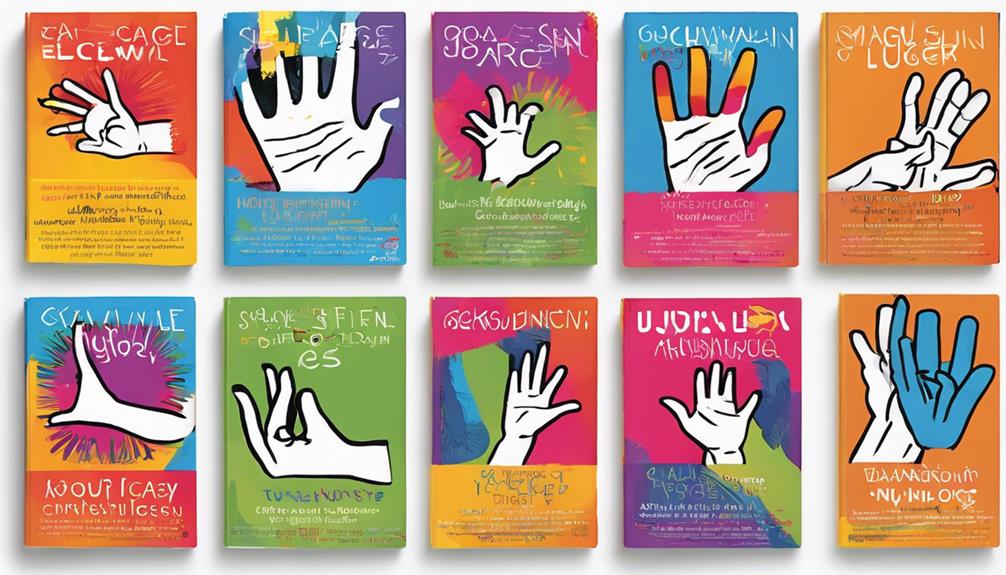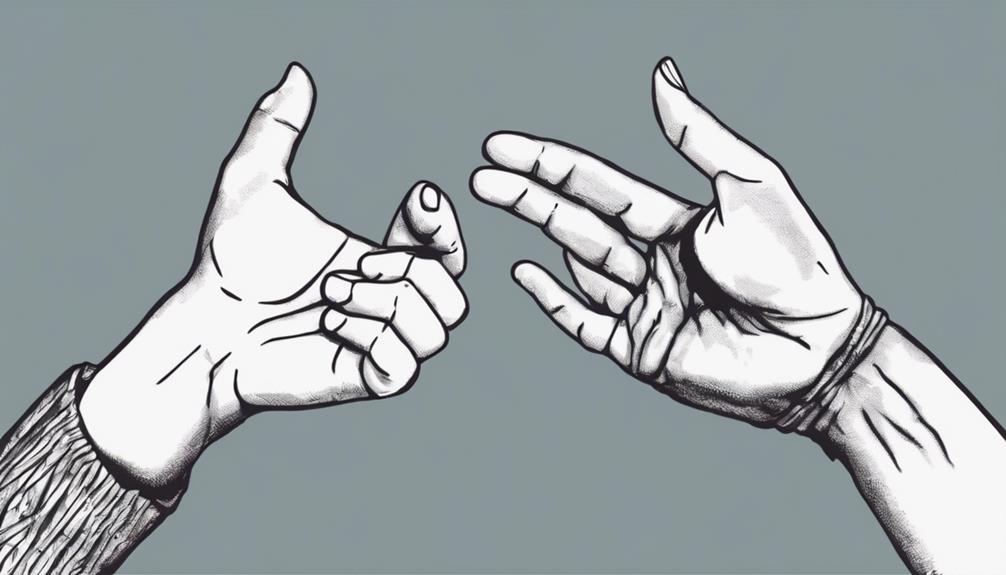While we were exploring various greetings in American Sign Language (ASL), I was fascinated by the intricate subtleties of non-verbal communication.
Have you ever wondered about the variations in signing 'How are you' and 'What's up' in ASL?
The distinctions may seem minor, but they hold significant weight in conveying formality and familiarity.
Let's explore the intricacies of these signs and their cultural implications in ASL interactions.
Key Takeaways
- Learn the signs for 'How,' 'Are,' and 'You' in ASL.
- Incorporate proper facial expressions and body language for tone.
- Practice with others to improve fluency and communication.
- Respect Deaf culture and values for effective ASL interactions.
Basics of American Sign Language (ASL)
Exploring the fundamentals of American Sign Language (ASL) reveals a rich and intricate visual language essential for effective communication within the Deaf community. ASL, used by Deaf and hard of hearing individuals in the United States and parts of Canada, has its own grammar, syntax, and structure distinct from English, making it a vibrant language.
Handshapes, facial expressions, body movements, and spatial references are crucial in ASL to convey meaning accurately. Learning ASL involves studying vocabulary, grammar rules, and practicing signing with others to enhance fluency and comprehension. This process isn't just about learning signs; it's about understanding the cultural nuances and linguistic intricacies that make ASL a valuable skill.
Mastering ASL promotes inclusivity, communication access, and cultural awareness, fostering a more inclusive society. By grasping the basics of ASL, we can better connect with and serve the Deaf community, bridging communication gaps and creating a more inclusive environment for all.
Understanding Facial Expressions in ASL

Facial expressions play a vital role in ASL communication, allowing for the conveyance of emotions and nuances that enrich the signing experience. Understanding facial expressions in ASL is key to grasping the full meaning behind the signs.
Here are some essential points to consider:
- Facial expressions can change the meaning of signs, adding depth to the conversation.
- Expressions like raised eyebrows, furrowed brows, and facial movements indicate different emotions or tones.
- Practice using facial expressions in conjunction with signs to enhance communication in ASL.
Forming the 'How Are You?' Sign
To effectively communicate the question 'How are you?' in American Sign Language, combine the signs for 'How,' 'Are,' and 'You' in sequence, while utilizing appropriate facial expressions and body language to convey tone and sincerity. Start by forming the sign for 'How' near your chin with an open hand moving outward, palm facing up. Next, sign 'Are' by bringing your fingertips together and touching them, then rotating your hand slightly. Finally, sign 'You' by pointing your index finger towards the person you are addressing. By combining these signs in order and incorporating the right facial expressions and body language, you can express the question 'How are you?' effectively in ASL.
| Emotion | Description |
|---|---|
| Happiness | Raise eyebrows, smile warmly |
| Concern | Furrow eyebrows, tilt head slightly |
| Excitement | Widened eyes, slight lean forward |
| Sympathy | Soft gaze, gentle nodding |
Practicing ASL Conversations

Let's dive into honing ASL conversational skills through practical exercises and interactive learning methods.
- Practice with Different Scenarios: Try asking 'How are you?' in various settings like meeting a friend, talking to a colleague, or greeting a family member.
- Engage in Role-Playing: Act out different scenarios with a partner to practice signing 'How are you?' in a natural and comfortable way.
- Seek Feedback and Guidance: Ask for input from fluent signers or ASL instructors to improve your signing technique and receive valuable tips for enhancement.
Culturally Sensitive Communication in ASL
Understanding cultural norms and etiquette is crucial for effective communication in American Sign Language (ASL). In ASL interactions, awareness of facial expressions, body language, and eye contact is essential. These non-verbal cues hold significant meaning and contribute to the richness of the conversation. Paying attention to the context and tone of the discussion helps convey messages accurately and with sensitivity. Respect for Deaf culture and community values is paramount as it enhances communication effectiveness in ASL.
| Cultural Sensitivity Tips in ASL | Description |
|---|---|
| Respect the Deaf community | Acknowledge and honor the Deaf community's rich culture. |
| Adapt signing style accordingly | Adjust your signing style based on the cultural context. |
| Use appropriate facial expressions | Express emotions and emphasis through facial expressions. |
| Foster connections | Building relationships through cultural sensitivity in ASL. |
Frequently Asked Questions
How Do You Say Hey How Are You Doing in Sign Language?
We say 'Hey, how are you doing?' in sign language by signing 'HOW,' 'YOU,' and 'DOING' sequentially.
It's important to maintain eye contact, use a neutral expression, and open body language to show genuine interest.
When signing 'HOW,' raise your eyebrows slightly and tilt your head forward. For 'DOING,' tap your chest with the index finger of your dominant hand.
Practice slowly and clearly for effective communication and understanding.
How Do You Ask How Do You Sign?
We often wonder about the best way to approach learning new signs. It's essential to ask questions and seek guidance. By doing so, we can expand our knowledge and understanding.
Remember, practice makes perfect when it comes to sign language. So, don't hesitate to inquire and engage with the Deaf community for a richer learning experience.
Let's embrace this journey together and continue to grow in our communication skills.
How Do You Say How Are You Feeling in Sign Language?
We ask 'How are you feeling?' in sign language by signing 'YOU FEEL HOW?' with a questioning look. It's crucial to show genuine interest with a neutral face and eye contact.
Our body language and facial expressions should convey empathy. Sign slowly and clearly, allowing understanding and effective responses. Practicing in front of a mirror helps ensure the message is accurately conveyed.
How Do You Ask What's up in Sign Language?
Sure!
When asking 'What's up?' in sign language, we can use a one-handed sign by keeping the middle finger down and the other fingers up. This sign is more informal and perfect for casual interactions. Younger generations often use this sign as a friendly greeting.
It reflects a relaxed tone, perfect for showing interest in the conversation. Remember to lean forward while signing to make the greeting more engaging.
Conclusion
In conclusion, learning how to ask 'How are you?' in American Sign Language opens doors to meaningful connections and understanding within the Deaf community.
Just like spoken language, ASL offers a unique way to express care and interest through gestures and facial expressions.
So, next time you meet someone who communicates using ASL, remember to sign with your heart, not just your hands. Embrace the beauty of sign language and watch your interactions blossom like flowers in spring.











